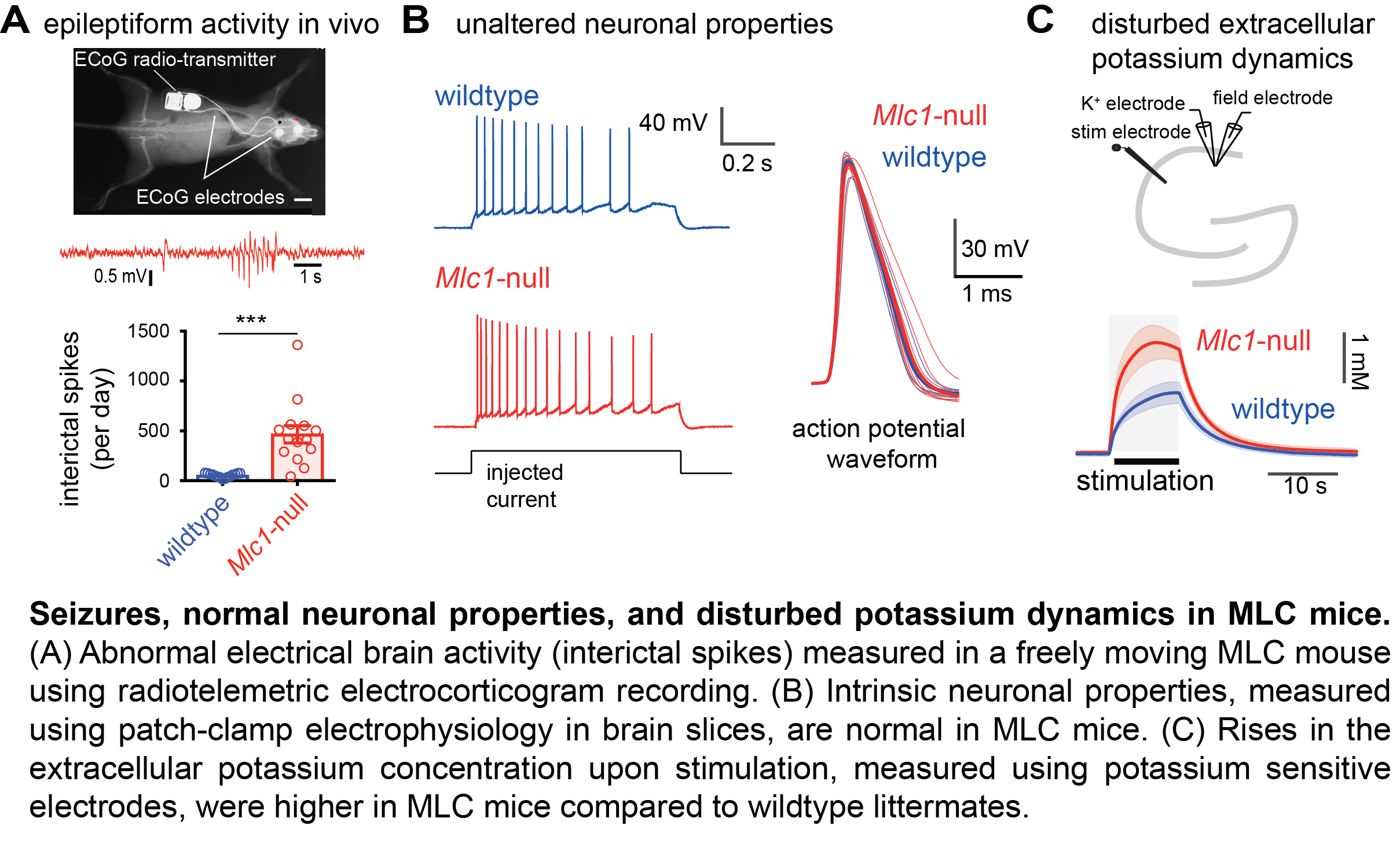
Collaboration between CNCR and VUmc published in Annals of Neurology
A collaborative study by the INF department (CNCR) and the department of Child Neurology (VUmc) increases our understanding of epilepsy in the heritable childhood white matter disease MLC (Megalencephalic Leukoencephalopathy with subcortical Cysts). MLC patients have increased water throughout the brain because of a defect in astrocytes, supportive brain cells. Clinically, this leads to deterioration of motor functions and mild cognitive decline. Epilepsy has been described in MLC patients, but this was never studied in detail.
The paper, published this month in Annals of Neurology, reveals that epileptic seizures are an important hallmark of MLC, affecting over 75% percent of the patients. The authors used two genetic mouse models for MLC to study the cellular basis of these seizures. Although MLC mice lacked spontaneous seizures, they showed abnormal electrical brain activity and a reduced seizure threshold. These findings could not be explained by deviant neurons, as intrinsic neuronal properties were normal in MLC mice.
Astrocytes play an important role in curtailing neuronal excitability by maintaining a low potassium concentration in the extracellular space around neurons. In MLC mice the dynamics of potassium was altered, leading to an increased extracellular potassium concentration upon neuronal activity. Therefore, it seems that the astrocyte defect in MLC leads to a disturbed regulation of ions and water in the brain, with seizures as a consequence.
